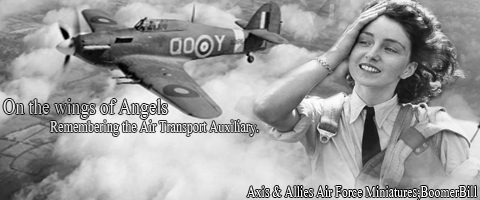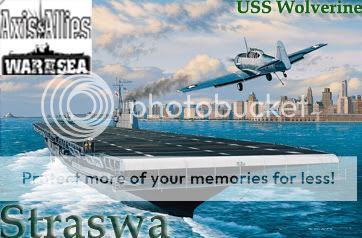Post by boomerbill on Apr 30, 2021 2:56:36 GMT
Firehouse and I met virtually by phone for a pandemic Axis and Allies Air Force miniatures battle, based on the June 26, 1941 attack by Tomahawks of the RAAF on the airfield at Homs, Syria, where Vichy D.520s and German aircraft had been staging to support the Anglo-Iraqi War. The Allies were concerned that German presence in Lebanon-Syria would threaten Egypt from the east.
The scenario: two P-40 Tomahawks (one Veteran, one Average) were to strafe the airfield twice and eliminate two Vichy/Axis aircraft.
The Axis forces were two D.520s and one Bf110C (all Average). The Axis aircraft ‘s victory conditions were to get all three aircraft airborne and to eliminate one Allied aircraft.
One D.520 began the game at Altitude 1 over the airfield. The other aircraft would become airborne on later turns (the second D.520 on Turn 2, then the Bf110 after Turn 3).
If a Tomahawk was in strafing position (Altitude 1, over the airfield), the Axis aircraft’s appearance would be delayed to the next turn that the airspace above the airfield was clear.
We used two Euro maps, with the airfield on Row 4, the second full hex to the right of the western edge. Allies entered at Altitude 3 on the eastern edge. All Axis aircraft appeared at Altitude 1 over the airfield. We rolled for sides, and Dave won the Allied team.
Turn One: Both P-40s enter as does one D.520 to prepare for future action.

Turn Two: Although the Axis wins initiative, the Vichy pilot opts to move first, allowing a second D.520 to become airborne. The Bf110 is still off-map.
The Veteran P-40’s Fast Dive SA is a High Speed choice that deprives it of some maneuverability, and the aircraft is unable to reach the airfield for strafing. The two D.520s vainly try to get into position to score a hit on the Average Tomahawk.
Turn Three: More jockeying for position and no hits scored.

Turn Four: The airfield has not been strafed and the Bf110 lifts off. With all three Axis aircraft airborne, all they have to do is flame a P-40 and the game is over. Three hits are scored: on the Bf110, the Veteran P-40 and one D.520.
Turn Five: The damaged Veteran P-40 strafes the airfield.
Turn Six: The Bf110 takes its second hit. The damaged D.520 is hit for a second time, Crippling it. The Veteran P-40 takes its second hit, Crippling it.

Turn Seven: The Crippled D.520 dives on the Vet’s 8 o’clock, but is a point short of breaking through the P-40’s 4-point Armor, and Veteran scores a third hit on the Bf110, Crippling it. Meanwhile, the Crippled D.520 is vitalled from behind and below by the Average P-40, which is rolling eight Attack dice thanks to its Esprit de Corps SA.

Turn Eight: Four aircraft left, two of them crippled and only one D.520 unscathed. Although the Bf110 enters the airfield space at Altitude 1 in the attempt to provoke a collision with the P-40 about to strafe the field, the collision is averted. The second D.520 gets a diving 8 o’clock shot on the Average P-40 and scores a hit, Crippling it. But the P-40 successfully shoots up the field, including the pilot’s mess where a case of French wine had just been cracked open. The way is clear for a diving 6 o’clock shot on the Crippled Bf110 by the Crippled Veteran P-40, and he is successful: It’s an Allied victory as the RAAF sweeps two enemy aircraft from the skies. BUT, no one remembered the Bf110’s tail gunner, who fires a “Hail Mary” burst at the P-40 and scores the kill! Both sides achieved their victory conditions: For the Axis, all three aircraft were airborne and one enemy aircraft was waxed; for the Allies, the airfield was strafed twice and two enemy aircraft were flamed.
“Mission accomplished,” the RAAF pilot of the Crippled P-40 says into the microphone, as the undamaged D.520 pilot ruminates about all that lost wine.
The aircraft depicted here are repaints, most done by me. No RAAF aircraft, sadly, but one P-40 is painted as the mount of James "Stocky" Edwards, Canada's highest scoring pilot in the Western Desert campaign, who turns 100 years old in June.
Initiative played a HUGE role in this matchup. Winning the initiative on the second turn meant the Axis could launch their aircraft from the airfield before the Allies could reach it. But the Axis had a devil of a time winning initiative once the Bf110 was airborne, meaning that two Axis aircraft had to be moved before an Allied aircraft had to move — a distinct Allied advantage.
As always, any day you can play AAAF is a good day.
The scenario: two P-40 Tomahawks (one Veteran, one Average) were to strafe the airfield twice and eliminate two Vichy/Axis aircraft.
The Axis forces were two D.520s and one Bf110C (all Average). The Axis aircraft ‘s victory conditions were to get all three aircraft airborne and to eliminate one Allied aircraft.
One D.520 began the game at Altitude 1 over the airfield. The other aircraft would become airborne on later turns (the second D.520 on Turn 2, then the Bf110 after Turn 3).
If a Tomahawk was in strafing position (Altitude 1, over the airfield), the Axis aircraft’s appearance would be delayed to the next turn that the airspace above the airfield was clear.
We used two Euro maps, with the airfield on Row 4, the second full hex to the right of the western edge. Allies entered at Altitude 3 on the eastern edge. All Axis aircraft appeared at Altitude 1 over the airfield. We rolled for sides, and Dave won the Allied team.
Turn One: Both P-40s enter as does one D.520 to prepare for future action.

Turn Two: Although the Axis wins initiative, the Vichy pilot opts to move first, allowing a second D.520 to become airborne. The Bf110 is still off-map.
The Veteran P-40’s Fast Dive SA is a High Speed choice that deprives it of some maneuverability, and the aircraft is unable to reach the airfield for strafing. The two D.520s vainly try to get into position to score a hit on the Average Tomahawk.
Turn Three: More jockeying for position and no hits scored.

Turn Four: The airfield has not been strafed and the Bf110 lifts off. With all three Axis aircraft airborne, all they have to do is flame a P-40 and the game is over. Three hits are scored: on the Bf110, the Veteran P-40 and one D.520.
Turn Five: The damaged Veteran P-40 strafes the airfield.
Turn Six: The Bf110 takes its second hit. The damaged D.520 is hit for a second time, Crippling it. The Veteran P-40 takes its second hit, Crippling it.

Turn Seven: The Crippled D.520 dives on the Vet’s 8 o’clock, but is a point short of breaking through the P-40’s 4-point Armor, and Veteran scores a third hit on the Bf110, Crippling it. Meanwhile, the Crippled D.520 is vitalled from behind and below by the Average P-40, which is rolling eight Attack dice thanks to its Esprit de Corps SA.

Turn Eight: Four aircraft left, two of them crippled and only one D.520 unscathed. Although the Bf110 enters the airfield space at Altitude 1 in the attempt to provoke a collision with the P-40 about to strafe the field, the collision is averted. The second D.520 gets a diving 8 o’clock shot on the Average P-40 and scores a hit, Crippling it. But the P-40 successfully shoots up the field, including the pilot’s mess where a case of French wine had just been cracked open. The way is clear for a diving 6 o’clock shot on the Crippled Bf110 by the Crippled Veteran P-40, and he is successful: It’s an Allied victory as the RAAF sweeps two enemy aircraft from the skies. BUT, no one remembered the Bf110’s tail gunner, who fires a “Hail Mary” burst at the P-40 and scores the kill! Both sides achieved their victory conditions: For the Axis, all three aircraft were airborne and one enemy aircraft was waxed; for the Allies, the airfield was strafed twice and two enemy aircraft were flamed.
“Mission accomplished,” the RAAF pilot of the Crippled P-40 says into the microphone, as the undamaged D.520 pilot ruminates about all that lost wine.
The aircraft depicted here are repaints, most done by me. No RAAF aircraft, sadly, but one P-40 is painted as the mount of James "Stocky" Edwards, Canada's highest scoring pilot in the Western Desert campaign, who turns 100 years old in June.
Initiative played a HUGE role in this matchup. Winning the initiative on the second turn meant the Axis could launch their aircraft from the airfield before the Allies could reach it. But the Axis had a devil of a time winning initiative once the Bf110 was airborne, meaning that two Axis aircraft had to be moved before an Allied aircraft had to move — a distinct Allied advantage.
As always, any day you can play AAAF is a good day.




